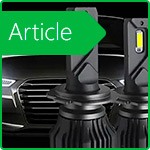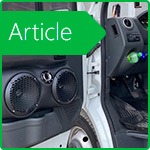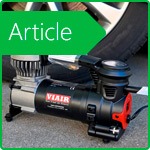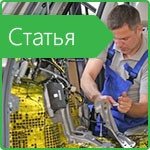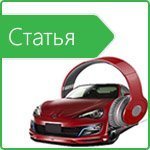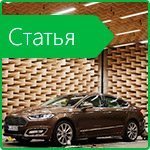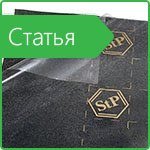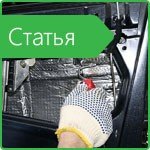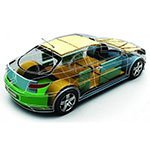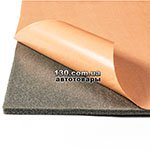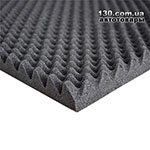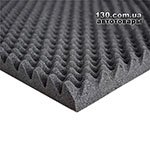Types, goals and methods of soundproofing a car
Car noise isolation is a special one. a process that is necessary in order to reduce unnecessary sounds in the cabin of the car, reduce the level of noise of various origins, reduce vibration load.
Noise Isolation is a major step in tuning cars. In addition, due to the car's handling of noise insulation materials, passive safety is significantly increased and anti-corrosion properties are introduced, as these materials are not affected by corrosion.
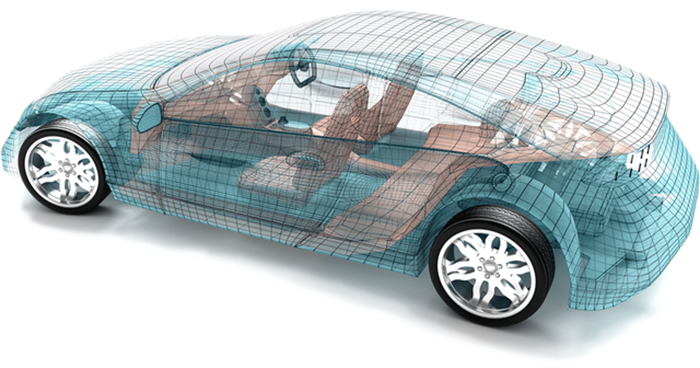
Comfort is perhaps one of the main emotions in a person’s life. Unfortunately, modern car manufacturers in order to reduce the cost, perform only the most minimal work to provide acoustic comfort. Not surprisingly, recently the demand for additional processing of the car is growing higher and higher.
Basic types of noise insulation:
- complex (complete) and partial vibration insulation of a car
- thermo, vibration and sound insulation
- door insulation
- ceiling insulation
- wheel arch insulation
- floor insulation
- luggage room insulation
- remove squeaks inside the cabin
- de-humming the passenger compartment, doors, etc.
Why car insulation is needed
The main purpose of noise reduction is to reduce sound and vibration load, to create comfort for the driver and passenger, to eliminate annoying creaks of various interior elements, to improve the comfortable feeling of driving a car.
All work on the noise insulation of the car, can be divided by the following tasks:
1. Vibro-Noise Isolation:
- Reducing the vibration load of the car;
- Reducing noise levels that come from the engine compartment, gearbox, road noise reduction;
- Eliminating squeaks of interior decorative components.
2. Creating the right acoustics-improving the sound method of vibration-noise insulation components to create the conditions for the correct sound and the functioning of the speaker.
3. Thermal insulation in the cabin.
Noise isolation can be carried out in different classes of cars-A, B, C, D, E, SUV, Pickup, Minivan. This is necessary because of the minimization of production costs by manufacturers who produce cars at the moment. Naturally, little attention is paid to noise insulation. Rubber manufacturers make their products with higher quality, the suspension is getting quieter, and European countries are raising standards for road surface and, as a result, insulation becomes unnecessary, because extraneous noise is reduced to a minimum value.
Unfortunately, cars that were created for Europe can not normally drive in the Ukrainian reality. Poor coverage, pits, potholes, pavers-all this makes additional noise insulation a very important point, because the noise that enters the salon creates considerable discomfort. Whatever the brand of car, additional noise insulation will have a positive effect. It could even be a BMW, AUDI or any luxury car. Buying a car in the cabin, the first thing that the buyer does is to check its differences in noise, and also the comfort inside the cabin. During operation, various extraneous sounds may appear-crickets (squeaks inside the cabin), the noise level will increase (because the driver's ears are accustomed to the sound of the car) and there is a discomfortable feeling that can be eliminated by soundproofing the car.
Cars from different manufacturers have differences in noise, but this is mainly due to their design. Less noisy ones are almost always perfect in design, but this is quite rare.
What effect does vibration insulation
Having understood exactly how sound propagates, you can absolutely say that all extraneous sounds, noises, overtones get into the cabin through various elements: doors, ceiling, floor, engine compartment, trunk. The sound, before it enters the salon, has many obstacles: various metal partitions, interior trim, carpet, plastic, leather and other elements. Therefore, the sound, with the penetration, is partly a loss. With incomplete loss and colliding with all sorts of obstacles, the sound becomes vibration and is already able to penetrate deeper (the sound wave passes into vibrations). Do not forget about the vibrations that creates the engine, gearbox, chassis. They can generate new sound waves perceived by the human ear. In the end, we get the primary noise (penetrating the cabin from the outside) and secondary noise (which were caused by vibration).
In order to overcome the noise of the primary and secondary type, used sets of vibration and noise insulation. Vibration insulation is glued directly onto clean, already degreased metal, and Shumka-onto vibration insulation. Vibration isolation is a kind of buffer against secondary noise (metal vibration is absorbed by the vibration insulation layer), thus neutralizing noise that could appear. Noise isolation successfully copes with primary noise due to its technological composition and absorbing properties. With delivery in Ukraine, vibration and noise insulation can be bought in Kiev, Kharkov, Odessa at 130.com.ua.
It is important that noise insulation can give a positive result only when vibration insulation is also used. This will allow you to successfully overcome both primary and secondary noises.
Vehicle treatment process
Car noise isolation is a rather complicated process, which includes four key stages:
1. Absolute disassembly of the cabin.
2. Laying vibration noise insulation elements.
3. Fighting creaks inside the cabin.
4. Complete assembly of the passenger compartment and quality control processing.
During full soundproofing, the car undergoes a complete disassembly of the entire cabin (including a torpedo, or not including, if it is not necessary according to the program) right up to the metal-chairs, threshold plastic, plastic from the trunk, racks, shelves, are removed and removed. upholstery/cover from the ceiling, carpet. In the end, it turns out completely naked interior with a torpedo. The main thing is the accuracy when disassembling the elements of the cabin (the caps can break depending on the quality of the caps themselves and the make of the car). After disassembling and degreasing, you need to start the process of laying noise insulation materials.
Laying materials is based on the principle of vibration insulation- & gt; insulation. The area of the cabin processing vibration-noise insulation materials is about 80-90% of the surface area of the metal.
Proper selection of noise insulation materials for different zones is a very important point! Using the same material for sound insulation of all areas will not give a good result. The materials that are used in different elements must be selected taking into account the surface area, which must be avoided from noise.
As for the squeaks, the fight against them-this is an extremely necessary event during the soundproofing cars. After carrying out noise insulation, creaking elements inside the cabin becomes a huge problem. Yes, the overall noise level in the cabin falls, but squeaking, crickets in the cabin become extremely unbearable. There are a number of materials with which you can get rid of crickets. Also, vibration-proof materials can be processed plastic items, thereby weighting them in order to remove vibrations. In general, the confrontation with the plastic inside the passenger compartment is carried out by carefully sizing the joints and filling with sealing materials.
After the vibration damping, noise insulation installation and processing of plastic parts, the passenger compartment is assembled in the reverse order. A pleasant result of the sound insulation of the car is a dramatic improvement in the acoustics of the car. Acoustic processing of noise-insulating materials elements, where there are speakers, allows the speaker system to express themselves in maximum quality. In any case, the replacement or installation of acoustics necessarily requires working with acoustic processing, otherwise the potential will not be revealed.
With regard to the processing of individual zones, which at first glance can not bear any noise. On this occasion, a specific answer can not be given, as well as the question of what is the largest source of noise. This is due to the fact that each car by brand and model is completely individual and requires a unique approach (every car has weak points that need to be given the greatest attention).
Insulation of individual vehicle parts
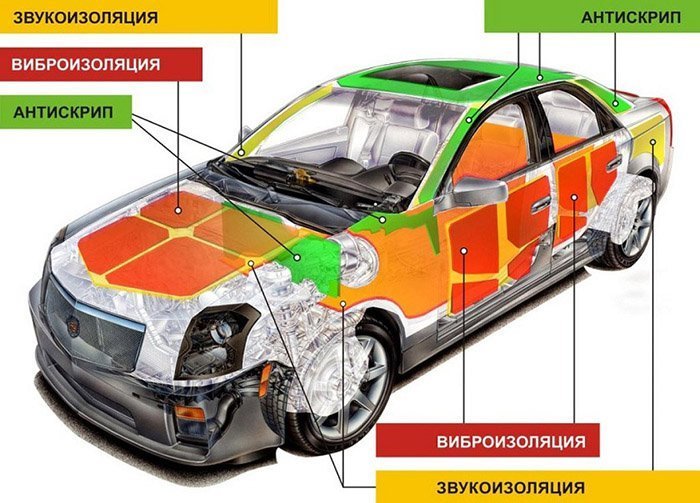
Doors. Through them penetrates a large amount of noise from the outside. Doors have large metal planes (panels) and a small number of stiffeners. Processing doors significantly changes the situation-the doors of a car from the factory are practically not processed and have very poor noise insulation (this applies to absolutely all brands without exception). That is why high-quality doors have a very good effect, which, in some cases, can compete with processing several zones at the same time. Additionally, door insulation improves the acoustic design of the door. The speaker, which is installed in the door, gets volume in its work, which ultimately leads to a significant improvement in the sound of the speaker system.
Materials for vibration noise insulation of doors:
The trunk. Insulation of the trunk is particularly relevant for those people who spend a lot of time in motion. The trunk, which has high-quality processing, reduces the noise in the cabin, makes the back of the car less audible, removes the extra sound coming from the rear arches.
Materials for vibration noise insulation trunk:
Ceiling. During the movement, this zone has a rather high level of noise, since its vibration load is quite high and is capable of creating excess noise. Roof processing vibration noise insulation materials helps to remove the buzz that comes from the roof at speed, reduce the audibility of rain in the cabin.
Materials for vibration noise insulation of the ceiling:
Hood. This zone is very relevant for diesel cars, since the bonnet area is large, and the vibration load from the engine is transmitted to large planes. Vibration insulation of the hood is very favorable for the level of noise and vibration inside the car.
Vibration noise insulation materials:
Paul The floor of the passenger compartment is an important area for sound insulation. Sources of noise and vibration of the suspension units are in close proximity and makes the floor the main source of noise.
Proper selection and installation of materials (materials that are specifically designed for highly vibrant areas) give a result that can impress any motorist.
Materials for vibration noise insulation of the floor:
Wheel arches. The arches themselves are not noisy, but transmit the vibration to the rest of the sites, which have less resistance and rigidity during the formation of vibration. Reducing the transmission of vibrations produced vibration-proof materials.
Materials for vibration noise insulation of wheel arches:
Conclusions
1. Cars of various models and from various manufacturers are different in terms of sound insulation. To individual cars need your approach. This also applies to areas that need to be focused on, as well as the use of various materials to achieve the best effect.
2. It is important to use only high-quality materials that are able to prevent unreasonable expenditure of finances, as well as to relieve from the negative consequences that often arise because of the wrong choice of materials in the parameters.
3. For individual zones, it is necessary to select the right materials, since using two or three materials to process the entire car will not give the desired result.
4. It is important to pay attention to the fight against squeaks and crickets inside the cabin.
5. Before you buy noise insulation, do not hesitate to consult with the managers of the online store, and the installation itself is better to entrust the experts. Do not forget that insulation is a very time-consuming process and conducting it yourself, you can spend a lot of time and effort, and the result may not be satisfactory.
If done correctly, noise insulation (vibration insulation, noise insulation, gasket materials) and proper use of materials can significantly improve the situation with the noise pattern inside the car.
Materials on the topic
Noise insulation: Best Sellers

Stay tuned for updates!
Subscribe to our Telegram channel and be the first to receive useful materials.
Subscribe













